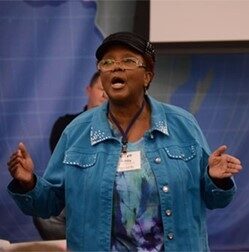How Do I Tell a Good Story? Part 4

We analyzed a story in Part 1, we looked at the elements of story structure in Part 2, looked at story delivery in Part 3, and now we want to share random additional tips.
Additional Tips
Reading versus telling. Younger children enjoy hearing a story read, but doing so with older children may destroy the story’s effectiveness that could be highlighted best through telling.
- Telling too many details or overemphasizing minor, unnecessary details can bog down a story. Pick the details crucial to the point of the story and consider taking out others.
- Using language above the level of your students will prompt them to lose interest.
- Trying to memorize the entire story could stifle the delivery of the story unless you have memorized key sensory words and movements that help illustrate the story. Using “Memory Hook” gestures not only will help you remember your story but will also help your students remember—and they are fun!
- Tacking on a “moral to the story” at the end isn’t effective. Let the story “do the talking."
- Showing visuals (pictures, objects) appropriately can bring the story to life, and can help you get through a story just as Memory Hooks do. That’s not bad—unless they become an obvious crutch and detract from the delivery.
- Keeping a balance between narration and conversation stimulates interest in a story so they want to listen.
- Remembering the age of your student and keeping the story to a length they can handle means you will keep their interest. A simple search on Bing[1]
will show you how long children can listen with attention:
Age | Attention Span |
| 2 years old | 4-6 minutes |
| 4 years old | 8-12 minutes |
| 6 years old | 12-18 minutes |
| 8 years old | 16-24 minutes |
| 10 years old | 20-30 minutes |
| 12 years old | 24-36 minutes |
| 14 years old | 28-42 minutes |
| 16 years old | 32-48 minutes |
Are they right? You be the judge, but these numbers do give us a starting point.
- Overcoming the fear of telling a story in front of others can be done! Practice, practice, practice! Now, go tell a story!
Listen to a Noted Storyteller
Ethel Barrett was known as a storyteller extraordinaire, as a teacher and prolific author. Now with the Lord, some of her narrated stories are available on YouTube. How many storytelling principles can you find in Ethel Barrett’s story of The Good Samaritan at this YouTube address? https://www.youtube.com/watch?v=TK-mwDUb4SI



Storytelling Workshop
Want more storytelling help? Check out “The BibleStorying Workshop” at https://www.goodsoil.com/training/biblestorying/. This excellent workshop equips you to tell stories (events from God’s Word) effectively. You will learn and polish at least three Bible events, practice telling those stories, and learn how to use Good Soil resources to share those stories in your personal ministry.




